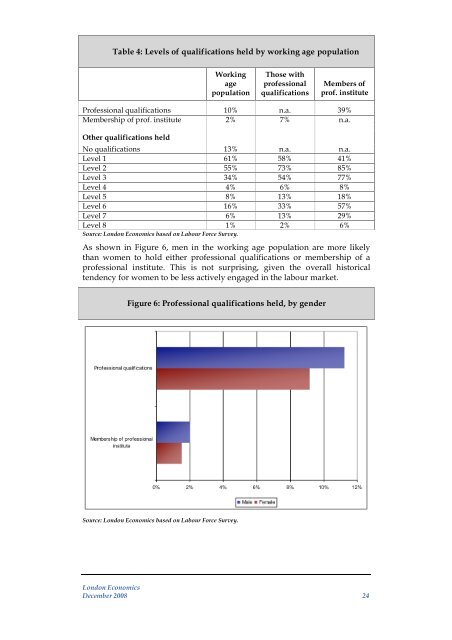Economic impact assessment of the CCPMO: Final report - CIPD
Economic impact assessment of the CCPMO: Final report - CIPD
Economic impact assessment of the CCPMO: Final report - CIPD
Create successful ePaper yourself
Turn your PDF publications into a flip-book with our unique Google optimized e-Paper software.
Table 4: Levels <strong>of</strong> qualifications held by working age population<br />
Working<br />
age<br />
population<br />
Those with<br />
pr<strong>of</strong>essional<br />
qualifications<br />
Members <strong>of</strong><br />
pr<strong>of</strong>. institute<br />
Pr<strong>of</strong>essional qualifications 10% n.a. 39%<br />
Membership <strong>of</strong> pr<strong>of</strong>. institute<br />
2%<br />
7%<br />
n.a.<br />
O<strong>the</strong>r qualifications held<br />
No qualifications<br />
13%<br />
n.a.<br />
n.a.<br />
Level 1 61% 58% 41%<br />
Level 2 55% 73% 85%<br />
Level 3 34% 54% 77%<br />
Level 4 4% 6% 8%<br />
Level 5 8% 13% 18%<br />
Level 6 16% 33% 57%<br />
Level 7 6% 13% 29%<br />
Level 8 1% 2% 6%<br />
Source: London <strong>Economic</strong>s based on Labour Force Survey.<br />
As shown in Figure 6, men in <strong>the</strong> working age population are more likely<br />
than women to hold ei<strong>the</strong>r pr<strong>of</strong>essional qualifications or membership <strong>of</strong> a<br />
pr<strong>of</strong>essional institute. This is not surprising, given <strong>the</strong> overall historical<br />
tendency for women to be less actively engaged in <strong>the</strong> labour market.<br />
Figure 6: Pr<strong>of</strong>essional qualifications held, by gender<br />
Source: London <strong>Economic</strong>s based on Labour Force Survey.<br />
London <strong>Economic</strong>s<br />
December 2008 24

















